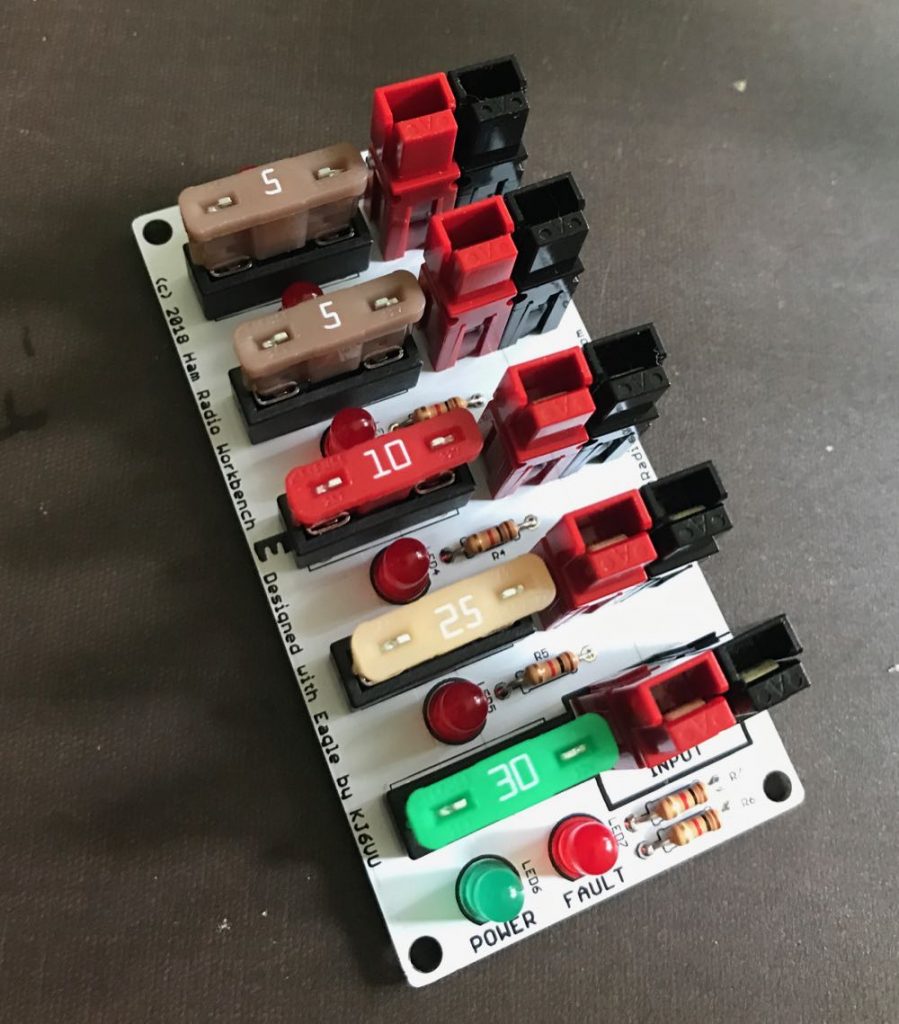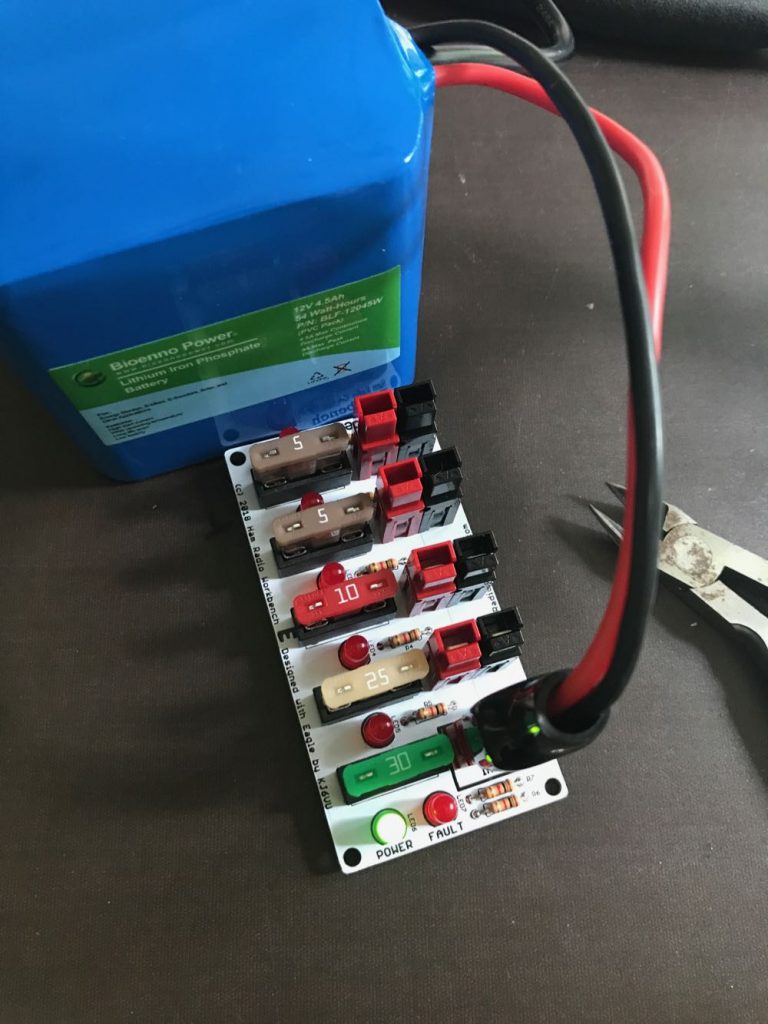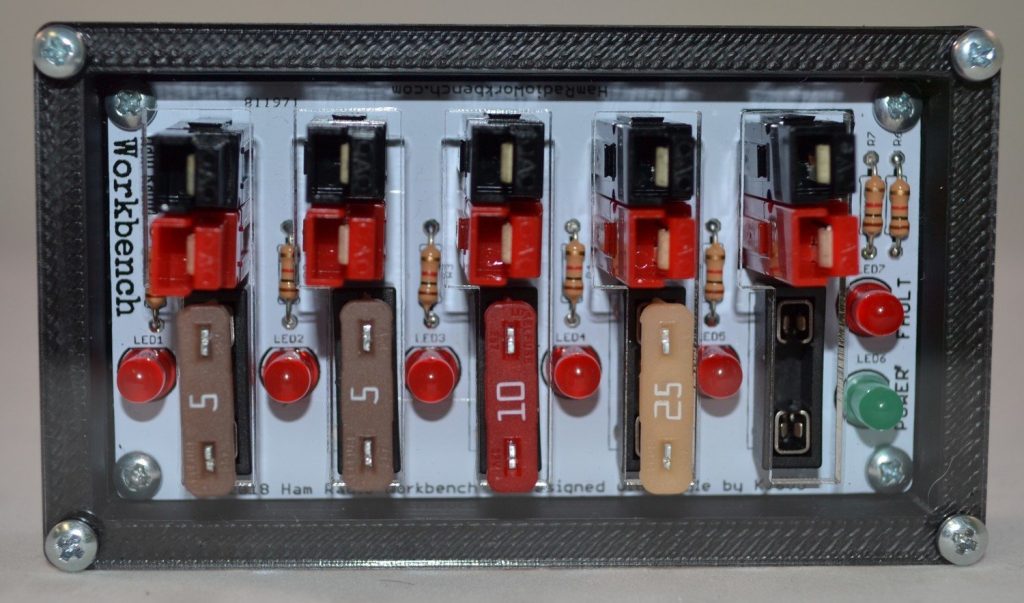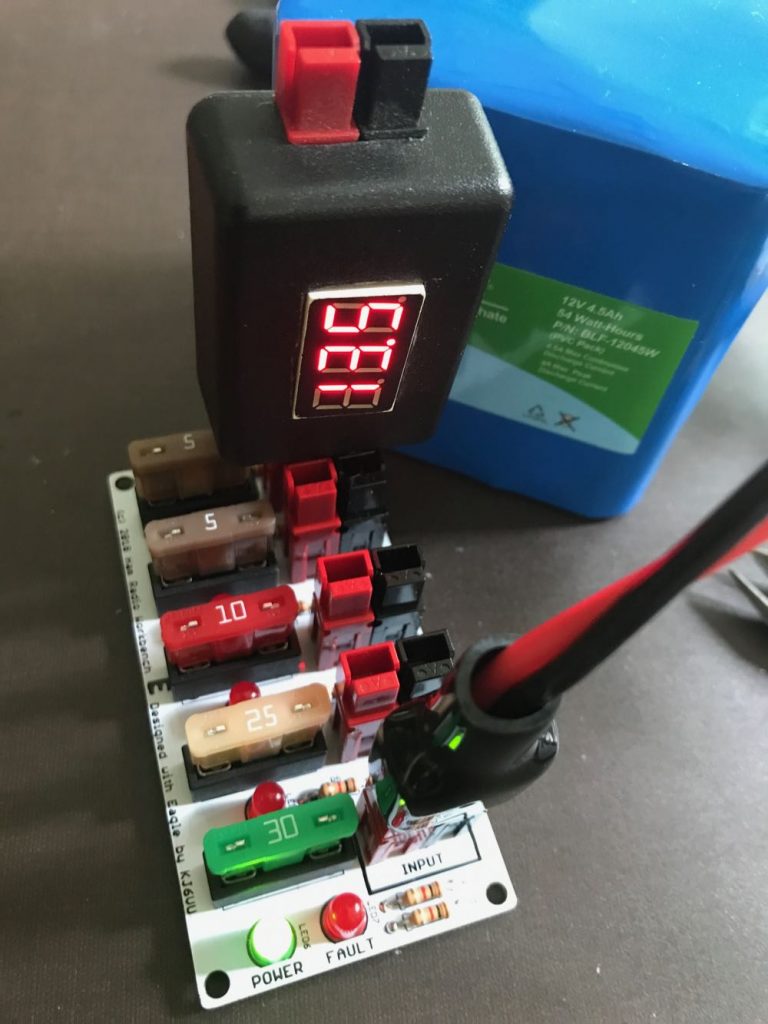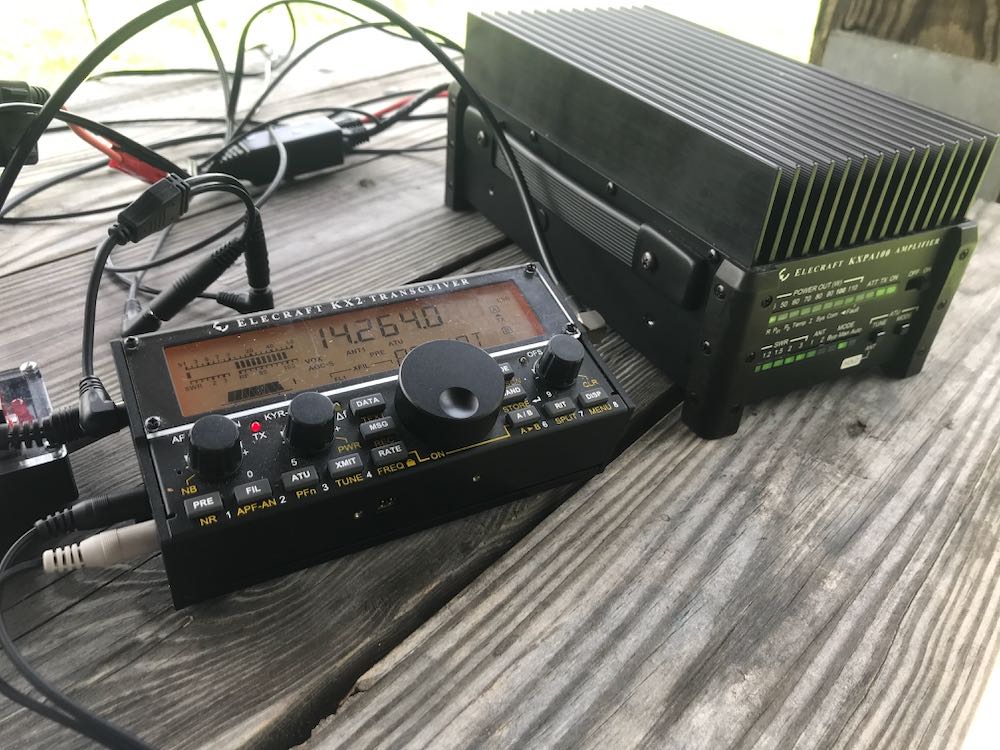
If you’ve been reading the SWLing Post for long, you’ll know that I’m a big fan of portable radio gear. Whether it’s a portable receiver, an SDR, or a ham radio, I believe radios are made to be taken outside––rain or shine; hence I love programs like Parks On The Air (POTA ) and Summits On The Air (SOTA), and I’ve always loved ARRL Field Day.
Of course, this ARRL Field Day was a bit different than years past due to Covid-19––there were more individuals on the air with their own Field Day stations, while there were relatively few clubs on the air. Typically, the opposite is true.
This year I’d planned to operate from the field at various POTA locations in western NC; some contenders were the Blue Ridge Parkway, Pisgah National Forest, and Mount Mitchell State Park. In the past few years, my buddy Vlado (N3CZ) and I––with spouses in tow––hit the field together, but this year he was out of town, and I planned to go solo.
I plotted a few hours of Field Day time at Craggy Gardens on the Blue Ridge Parkway. The night before, I had my antennas and the Elecraft KX2, KXPA100, Heil Pro Headset, and 15 aH LiFePo battery (all packed in my go-packs, of course), in the car and ready to go.
Saturday morning. I woke expecting fairly nice weather: partly cloudy with a chance of showers. Turned out, it was chilly, gusty, with total cloud cover and fairly constant rain. I’ll admit, it dampened my enthusiasm for Craggy, because while it’s a gorgeous site, it’s well above 5000′ ASL, thus the winds up there can be seriously gusty and the weather can turn on a dime.
So, I decided to put up my feet in the shack and operate class 1E, meaning on emergency/battery power.
I started calling CQ at the start of Field Day and, to my surprise, worked a constant pile-up for nearly an hour. Within that fairly short space of time I found I’d already collected about 90 or more stations on 40 meters.
After that, I hunted and pounced for maybe an hour, then took a break; later that night, I operated intensively again for 30 minutes or so. Had I been at a Field Day site, I would have been a much more dedicated operator, but frankly, I’m not even sure I plan to send in my logs. Still, it was fun.
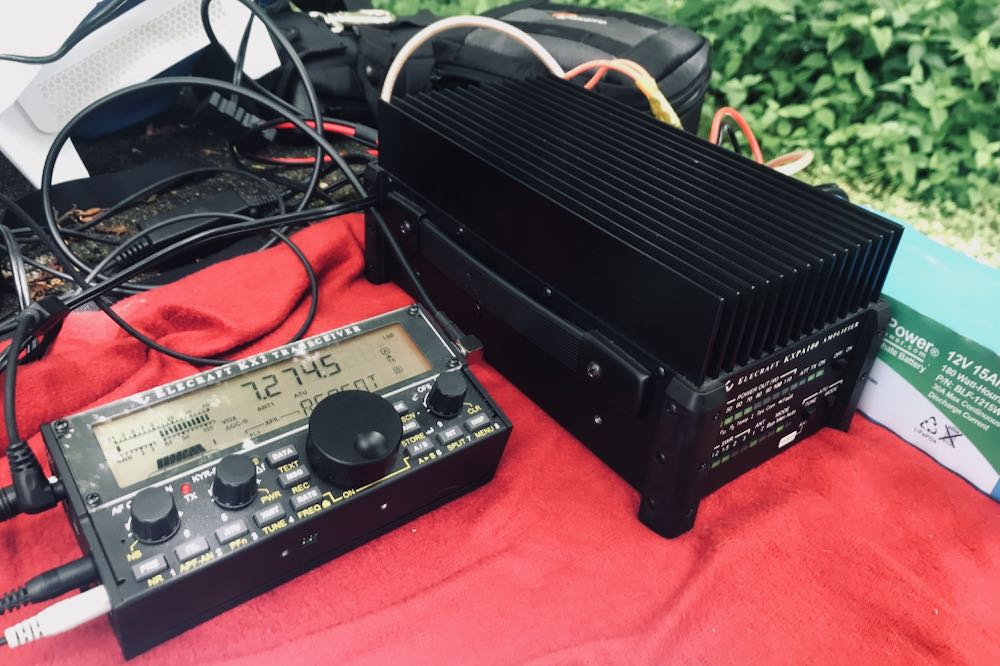
My set up on a damp picnic table at the Craggy Gardens Picnic area.
Sunday morning. The weather was much more pleasant from the get-go, with sun and wind, though thunder showers were in the forecast. Around 11:00 or so, my wife suggested we pack up and head to Craggy Gardens for a little radio fun followed by some lunch and hiking.
We reached the site–it was beautiful, but ominous. Thick fog and Saharan dust (no kidding) covered the site and surrounding mountains. Still, I set up the station and my new Wolf River Coils TIA portable vertical.
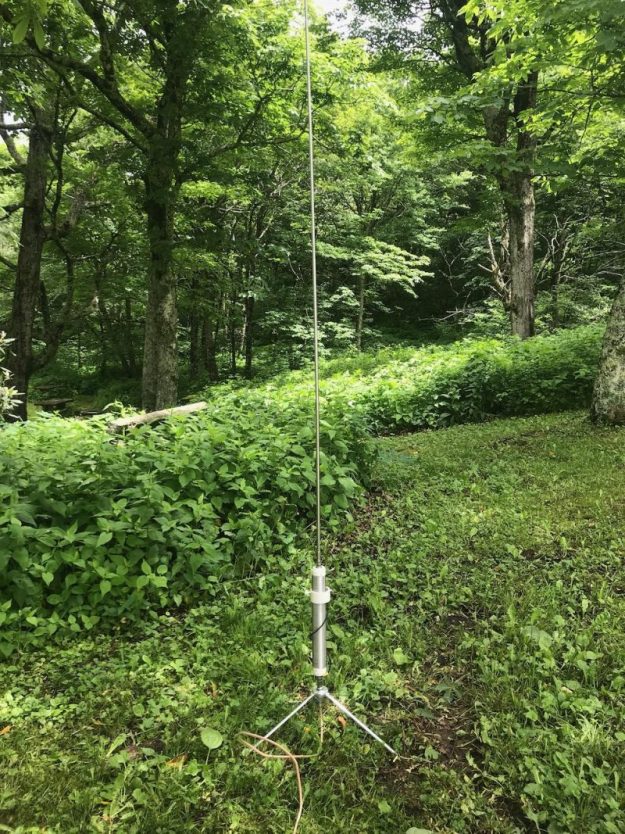
My daughter and I deployed the TIA vertical in a matter of 5 minutes.
I think I logged two stations before the misty clouds rolled up all around me; then (remember that change-on-a-dime weather?) a sudden––and torrential––downpour came from nowhere. My wife snagged all she could carry and ran for the car, and I quickly covered my gear with my raincoat and packed everything in my packs as soon as possible. I had to make two trips to the car to pack everything, and needless to say, with my raincoat in the service of my equipment, I was drenched to the skin. I literally looked like I had jumped into a lake with my clothes on. Fortunately my gear––at least, the important gear––was only a bit damp, but internally fine. Herein lies one of the great things about being a pack geek: quality packs tend to be water-resistant, if not fully waterproof.
But. If I’m being completely honest, I’ll admit I was a bit miffed that I got so little radio time before the heavens opened. We knew there would be a risk of bad weather and, frankly, other than the hassle of packing and unpacking, we actually acknowledge the entertainment value of a little WX from time to time. After all, this is the hazard of operating under a wide open sky.
My wife, sensing my disappointment, suggested we go to another site to play a little radio, but at that point I just wasn’t feeling it. What I felt instead was the damp…wringing wet-level damp…and my spirits were dampened. too. I suggested we make our way back.
En route, I saw a sign for the Zebulon B. Vance Birthplace––a historic site that I knew was a POTA entity. I’d completely forgotten about this site, and decided to make a detour so I could scope out the site for a future activation. By now I’d warmed up a bit, and a bit of lunch helped revive my flagging spirits.
Turns out the site’s visitor’s center is closed on Sunday, but the gates are open so the public can enjoy the grounds. We drove up to their covered picnic area, although the cover was now peace of mind only, as the sun was again making an appearance. The setting was…well, ideal. And here I was. How could I not go ahead and activate this POTA site?
Zebulon B. Vance Birthplace (K-6856)

It was windy but warm, and while my wife spread out the packs, lunch cooler, and jackets to dry, I, too, found I was no longer dripping. By the time I set up the Wolf River Coils TIA vertical and my KX2/KXPA100, the togs were fairly dry, and indeed I was quite comfortable again. I hopped back on the air and worked a number of stations in short order, easily logging the ten needed to confirm the park activation.
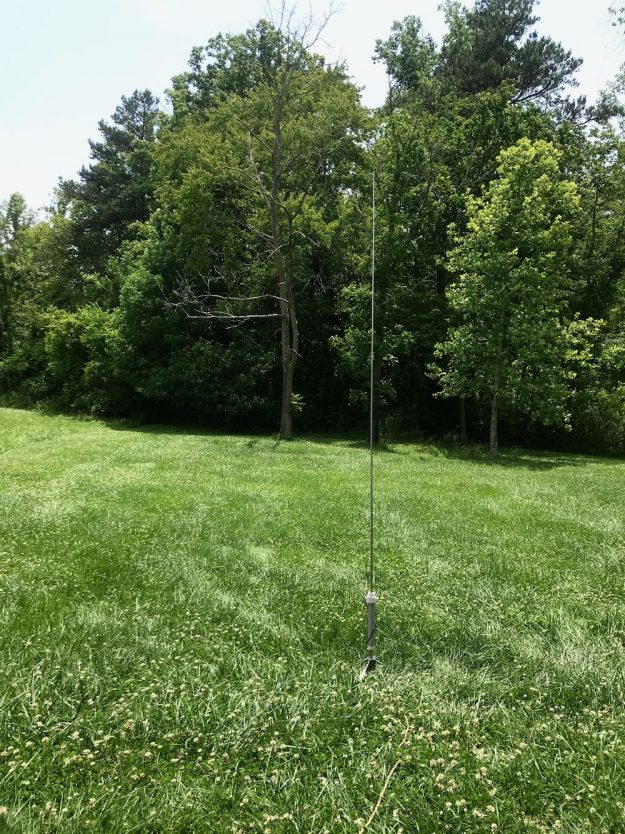
The Wolf River TIA is outstanding in its field (sorry!)
Later, I discovered that the site was an “All-Time New One” (ATNO) in the POTA system. A bittersweet discovery, in a way, because Field Day is not the best time for POTA hunters to log a new site. Still, I wasn’t even calling CQ with POTA in mind; I just worked Field Day stations and had a great time.
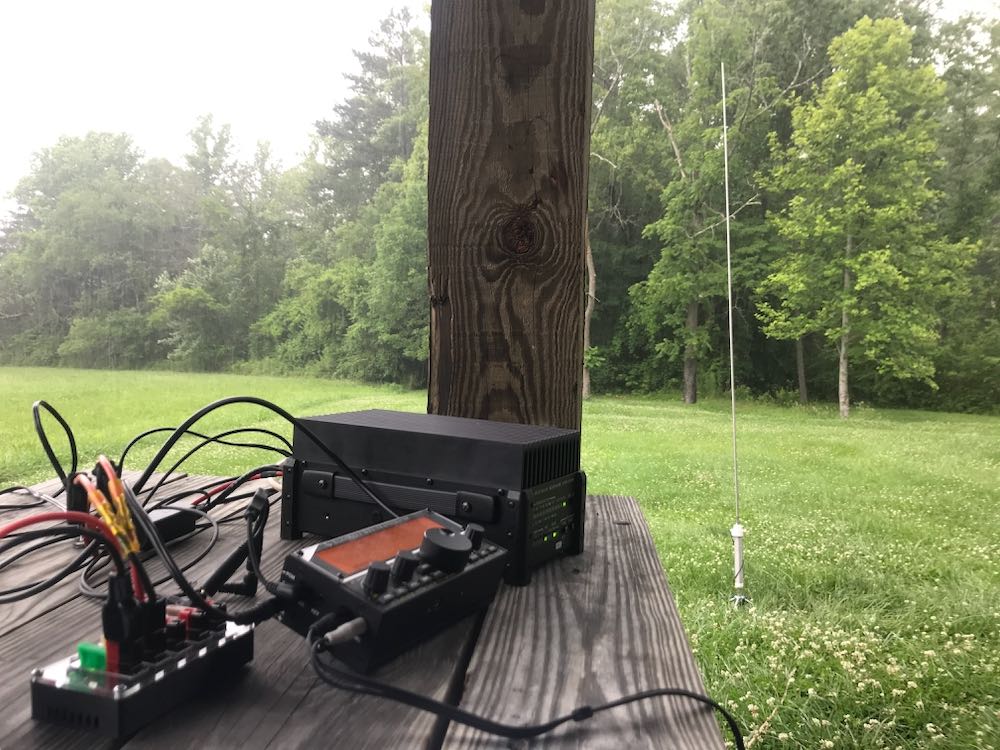
Just as I finished, there was yet another downpour, but as the picnic area where I’d set up was covered, I no longer feared my gear getting soaked. This time, it was a sudden loud clap of thunder that gave me my cue to pack up quickly!
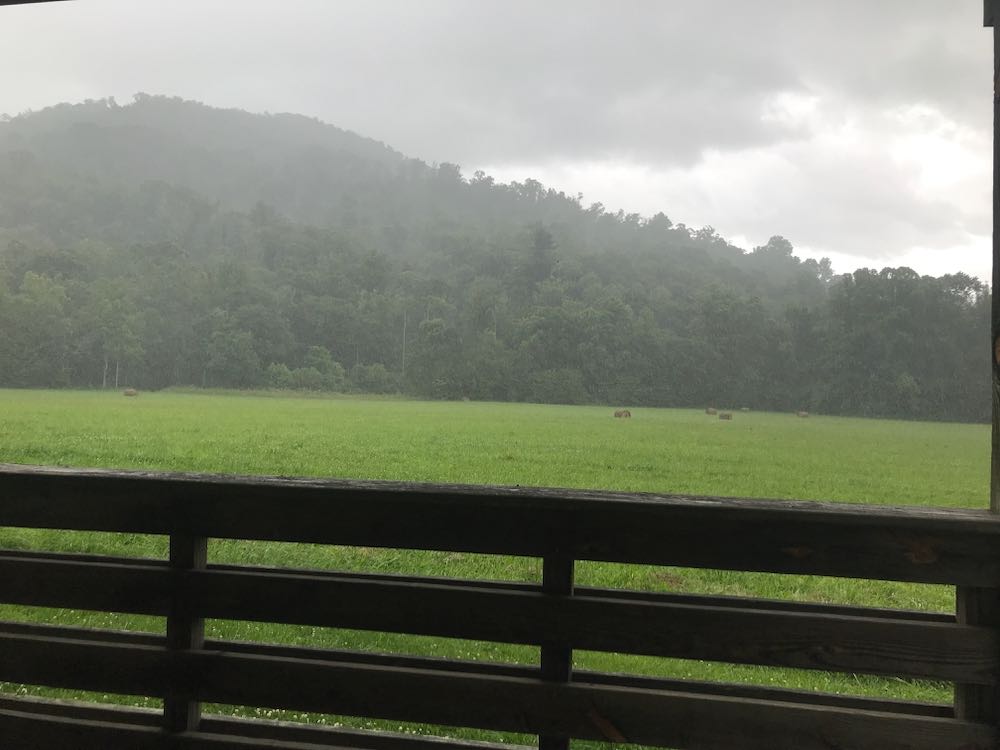
Still, all in all, I was very pleased with my weekend Field Day chase, and it was worth dodging rain storms for it. Sure, I would have loved to play radio at Craggy Gardens for a couple hours, but it was a pleasant surprise to fit in an ATNO activation before the end of the day. I’d have never guessed the Vance site was an ATNO, since it’s so accommodating and accessible. Indeed, I’ve discovered that, at this stage in POTA, most of the sites that haven’t been activated are either newly-incorporated into POTA or are very inaccessible. If you missed me there on Field Day, no worries: I plan to head out there again in the very near future.
Oh, and I did learn one more thing over the weekend: the Wolf River Coils TIA vertical antenna is incredibly easy and speedy to deploy. I’m very pleased with this recent acquisition!
Parkway and parks? I’ll be back soon. My radio’s already packed.
Did you participate in Field Day or put your receivers to the test by trying to log exchanges between stations? Please comment!
Do you enjoy the SWLing Post?
Please consider supporting us via Patreon or our Coffee Fund!
Your support makes articles like this one possible. Thank you!

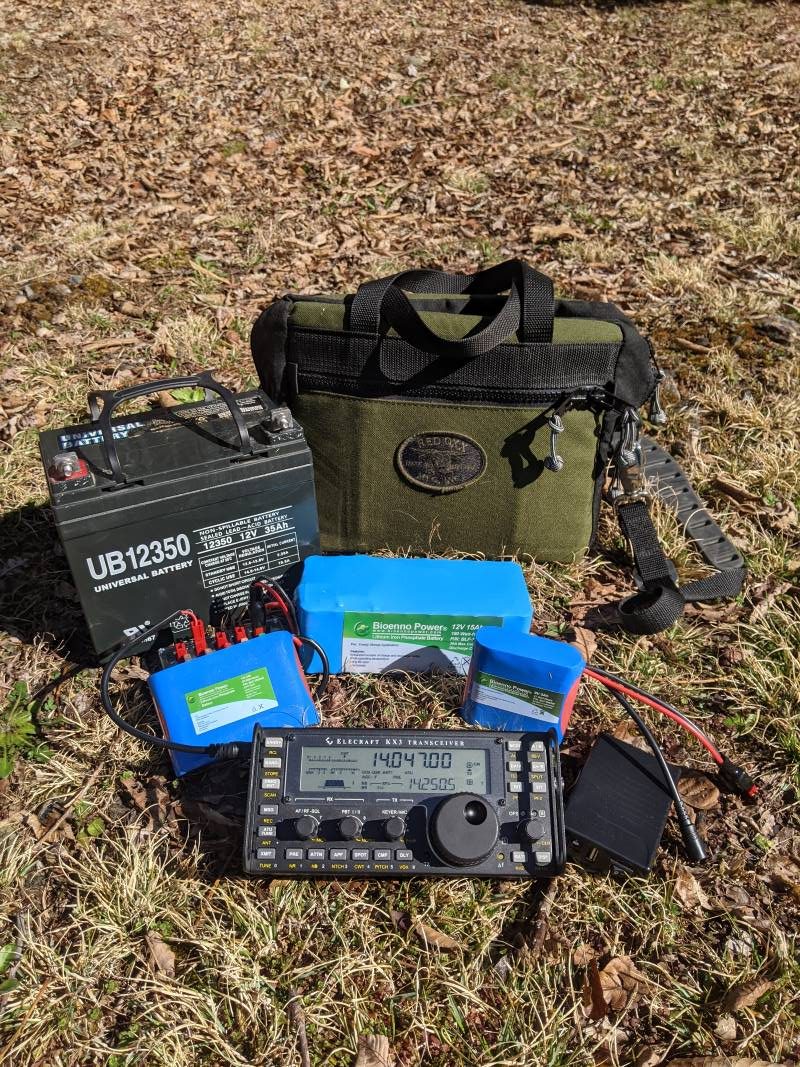 Over on QRPer.com, I just published a post on portable power that was The Spectrum Monitor magazine’s April 2021 cover article.
Over on QRPer.com, I just published a post on portable power that was The Spectrum Monitor magazine’s April 2021 cover article.







